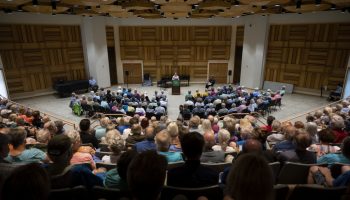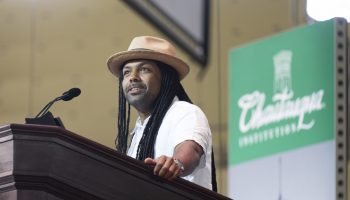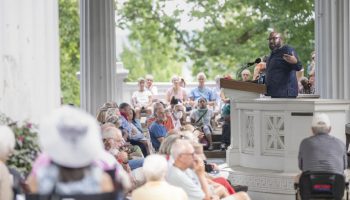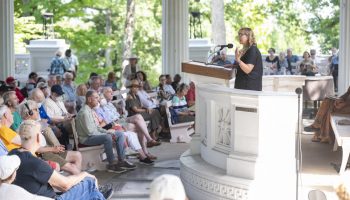
The view of human history may be clouded by the passage of time — but because of people like Kristin Romey, it’s now possible for some to throw their gazes back through the fog of the “used to be,” and glimpse insights into antiquity.
“Unless you’re an emperor and you’ve got your face on a coin, archaeology is super difficult,” said Romey, an archaeology editor and writer for National Geographic, “especially when it comes to zeroing in on a single individual, and even proving that person’s existence.”
Romey has reported on archaeology for National Geographic since February 2016, and in 2017 wrote a feature for the magazine on “What Archaeology is Telling Us About the Real Jesus.”
At 2 p.m. Monday, July 8 in the Hall of Philosophy, Romey will bring clarity to the beginnings of Christendom as part of the Week Three Interfaith Lecture Series: “What Archaeology Tells Us About Biblical Times.” Romey’s lecture will walk “In the Footsteps of Jesus: A journalist’s quest into the origins of Christianity.”
“When we set out to look at the archaeology of Jesus Christ, it wasn’t to say ‘he existed or didn’t exist,’ ” Romey said. “That’s not the point. What really interested me, with my background in the archaeology of the Classical world, is the chaos of the first century.”
Oppressive Roman rule, squabbling Jewish factions and the antagonism between the two led to a “pressure-cooker of time,” according to Romey.
“So it’s kind of interesting to place this Jewish guy who lived in Roman Palestine into that whole mix,” Romey said. “The development of Christianity really comes out of this first century political pressure-cooker.”
But Romey said Jesus wasn’t the only one proclaiming he was the son of God during that time.
“There were plenty of guys out there roaming the deserts and saying that they had a direct line to God,” Romey said. “Why we ended up with this one specific guy who was prosecuted and crucified by the Romans — at some point, we can’t explain what that is. There are accidents in history all the time.”
Part of Romey’s journalistic work has focused on the restoration of the Church of the Holy Sepulchre in Jerusalem, which contains what is said to be the sites of Jesus’ crucifixion and tomb.
“What I found out through my reporting was that at the time that Jesus was crucified, about 33 A.D. or so, the location of the Church of the Sepulchre was actually outside the walls of Jerusalem,” Romey said. “It was on a main road leading to the coast, between Jerusalem and the coast. That area had been an old limestone quarry that had been repurposed as a burial ground for wealthy Jews. The archaeology shows us all that.”
Romey has spoken to archaeologists who said the New Testament provided clues which, in turn, pointed to that burial site as being the most logical possibility for the location of Jesus Christ’s tomb.
Romey said National Geographic applies a way of approaching subjects for storytelling that can be applied to anything, not just the story of Jesus Christ.





